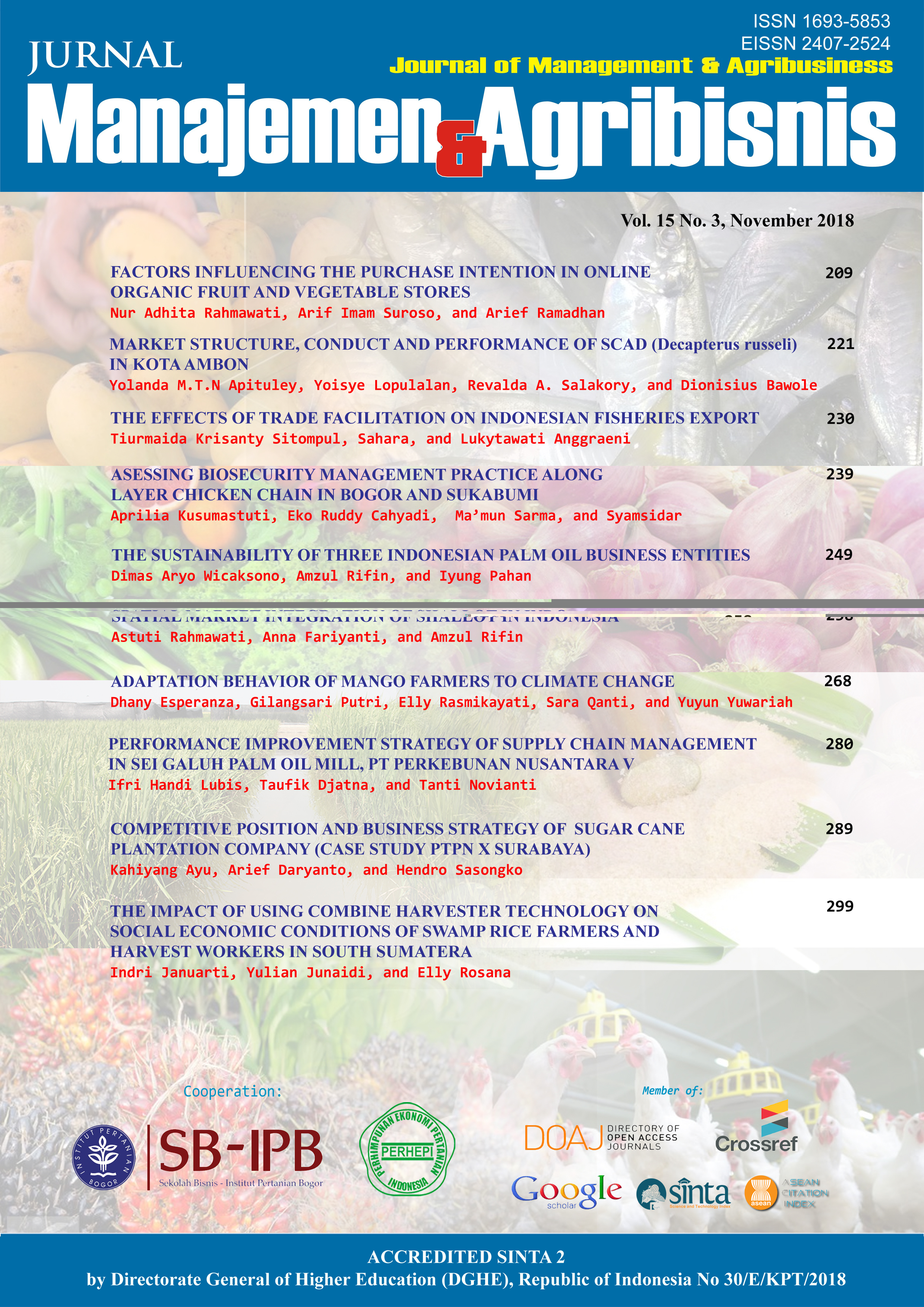Asessing Biosecurity Management Practice Along Layer Chicken Chain in Bogor And Sukabumi
Abstract
Biosecurity is one of the government's recommended risk management to limit the exposure of disease agents, but the implementation of biosecurity in supply chain is reportedly still not optimal. This study aims to identify supply chain of layers especially live chicken chain in Bogor and Sukabumi and to analyze the level of application of biosecurity in the chicken chain. Survey method with checklist questionnaire was used to obtain the required data. The results show that the chicken chain of layer involves the farmers and selllers of layers including collectors, poultry market sellers, and butchers, and end consumers. Culled layers are distributed in the form of live birds that can increase the risk of disease due to the accommodation time and market system which are mostly not first in first out (FIFO). The application of layer farmer biosecurity is at a moderate level (score 33.4 in Bogor and 40 in Sukabumi from a maximum score of 60). In the sellers of layers, the application of biosecurity is at a low level (score 21.9 in Bogor and 25 in Sukabumi from a maximum score of 69). Differences in biosecurity practices of farmers in Bogor and Sukabumi areas lie in the protection of wild birds. The differences in the biosecurity practices of layer bird sellers in the areas of Bogor and Sukabumi lie in the action against new poultry and action on transportation equipment. Biosecurity scores that have not been optimal indicate that the implementation of biosecurity still needs to be improved at each point of the chicken chain. Increasing biosecurity in each chicken chain point will help reduce the risk of exposure to AI viruses in layer birds through the chicken chain so that losses can be minimized.
Keywords: supply chain, biosecurity, disease, poultry, unggas hidup
Authors
Authors who publish with this journal agree to the following terms:
- Authors retain copyright and grant the journal right of first publication with the work simultaneously licensed under a Creative Commons Attribution License that allows others to share the work with an acknowledgement of the work's authorship and initial publication in this journal.
- Authors are able to enter into separate, additional contractual arrangements for the non-exclusive distribution of the journal's published version of the work (e.g., post it to an institutional repository or publish it in a book), with an acknowledgement of its initial publication in this journal.
- Authors are permitted and encouraged to post their work online (e.g., in institutional repositories or on their website) prior to and during the submission process, as it can lead to productive exchanges, as well as earlier and greater citation of published work (See The Effect of Open Access).

